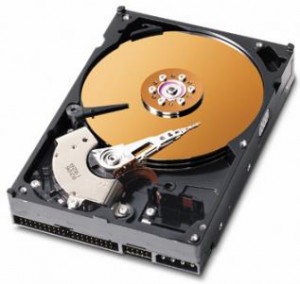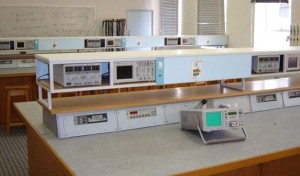Seagate Technology – Too cheap to be this big
For once I can mention a company that most of you may have heard of. Seagate Technology (STX) is the world’s largest hard drive maker, producing a wide range of standard hard drives and since December of 2009 has also been producing a line of solid state drives, although they were a late entrant to the market. Of course, for enterprise or most consumer electronics, the spinny magnetic disk isn’t going anywhere anytime soon.
 But what makes Seagate pop up on everyone’s radar these days is, of course, their P/E ratio of 4 and a quarter, which is almost inconceivable in a company this large (market cap of $6 billion and annual sales of about $12 billion) and this well followed. My initial instinct is that their earnings were distorted by nonrecurring gains, but I found that not to be the case. But I did find that the company had substantial tax benefits accrued and therefore has paid a negligible amount for income taxes year to date, but that only pushes the P/E up to about 7. I can’t explain why such a large company should be the subject of this degree of market neglect (and large competitor Western Digital is also trading a low P/E), but I couldn’t explain the mania for subprime mortgage derivatives either, and the wise value investor just takes cheapness as he or she finds it.
But what makes Seagate pop up on everyone’s radar these days is, of course, their P/E ratio of 4 and a quarter, which is almost inconceivable in a company this large (market cap of $6 billion and annual sales of about $12 billion) and this well followed. My initial instinct is that their earnings were distorted by nonrecurring gains, but I found that not to be the case. But I did find that the company had substantial tax benefits accrued and therefore has paid a negligible amount for income taxes year to date, but that only pushes the P/E up to about 7. I can’t explain why such a large company should be the subject of this degree of market neglect (and large competitor Western Digital is also trading a low P/E), but I couldn’t explain the mania for subprime mortgage derivatives either, and the wise value investor just takes cheapness as he or she finds it.
I didn’t find any major nonrecurring events in fiscal year 2010 (Seagate’s fiscal year ends in June), but of course in fiscal year 2009 , like nearly every company with significant goodwill on the books, they wrote theirs off in its entirety. I’ve stated previously that goodwill writeoffs are a noncash expense, and of course goodwill on the balance sheet is a phantom asset, so it can safely be ignored in the majority of situations. Even ignoring the goodwill writeoff, they reported a loss in fiscal year 2009 as sales declined by 23%, but sales for this year seem to have rebounded at least to 2007 levels.
In terms of earnings and cash flows, the company’s free cash flow has been roughly equivalent to earnings, as depreciation and capital expenditures have tracked each other pretty well over the last few years. It was even nearly positive in fiscal year 2009 owing to a decline in capital expenditures ($600 million as opposed to $900 million), and the low level of capital expenditures seems to be continuing for the first three quarters of 2010 (less than $400 million year to date). Earnings year to date have been $1.2 billion, and depreciation $600 million, so the year’s free cash flow to date is $1.4 billion, which is nearly $1.9 billion on an annual basis, creating a current price/free cash flow from operations ratio of less than 3.5. Even if capital expenditures return to historical levels, free cash flow would come to $1.4 or $1.5 billion. This produces, again a price/free cash flow from operations of around 4.5, a definitely attractive situation.
Of course, price/free cash flow from operations is calculated before interest and taxes, and taking those into account we have a projected long term price/free cash flow ratio of approximately 7, which is still notably low for a company of this size, market presence, and stability.
Turning to the balance sheet, most notable is the very top entry: over $2 billion in cash, and $200 million more in short term investments. This is almost 1/3 of the market cap. Midway through fiscal year 2009, Seagate suspended its modest dividend, and despite its impressive cash flow, it has also ceased to engage in shareholder buybacks, which totaled $1.3 billion in fiscal years 2008 and 2007. It may be unseemly to want a cash return on investment from a high technology firm, but I think nowadays hard drives are commoditized enough to be able to support dividend payments, and the rate of cash accumulation on the balance sheet is fairly good evidence for my view.
Seagate claims that they suspended the dividend for liquidity reasons, and on paper their liabilities do come to 65% of their assets, but their interest coverage ratio for 2010 to date is approximately 10x based on earnings alone, suggesting to me that they have more than adequate liquidity. Curiously, their credit rating is a mere BB+, the best of the sub-investment grade ratings, and since a coverage ratio of 10x is more consistent with an AA rating, I think it is the apparent low level of asset coverage that gives the ratings agencies concern.
 However, the apparent low level of asset coverage and high debt should be analyzed in view of Damodaran’s suggestion of a “research asset.” Research and development produce benefits that are considered by accountants to be too nebulous to capitalize (or lend money against), so they must be expensed. However, R & D produces a definite benefit to the company, and in the hard drive business it is a practical necessity. Seagate has spent approximately $900 million on R & D every year for the last three full fiscal years, and is on track to do so in fiscal year 2010 as well. As R & D has been a large and growing category of “expense” for Seagate I can’t say that amortization of this theoretical research asset is faster than its accrual, so it would definitely not be a source of free cash flow. But it should occupy a significant space on the balance sheet; it would certainly explain why a company with $1.5 billion in shareholder’s equity can produce projected earnings of roughly $1 billion a year.
However, the apparent low level of asset coverage and high debt should be analyzed in view of Damodaran’s suggestion of a “research asset.” Research and development produce benefits that are considered by accountants to be too nebulous to capitalize (or lend money against), so they must be expensed. However, R & D produces a definite benefit to the company, and in the hard drive business it is a practical necessity. Seagate has spent approximately $900 million on R & D every year for the last three full fiscal years, and is on track to do so in fiscal year 2010 as well. As R & D has been a large and growing category of “expense” for Seagate I can’t say that amortization of this theoretical research asset is faster than its accrual, so it would definitely not be a source of free cash flow. But it should occupy a significant space on the balance sheet; it would certainly explain why a company with $1.5 billion in shareholder’s equity can produce projected earnings of roughly $1 billion a year.
I will add that I don’t like their “anti-dilution” policy of buying back shares to offset the effect of stock grants and options exercises; it assures that they buy back stock after it goes up, not before.
On the whole, though, I expect that Seagate’s strong operations backed up by a demonstrated willingness to invest in capital and product development, should allow it to retain its market positions and generate the projected cash flows that indicate it to be a very attractively priced opportunity.
Leave a Reply